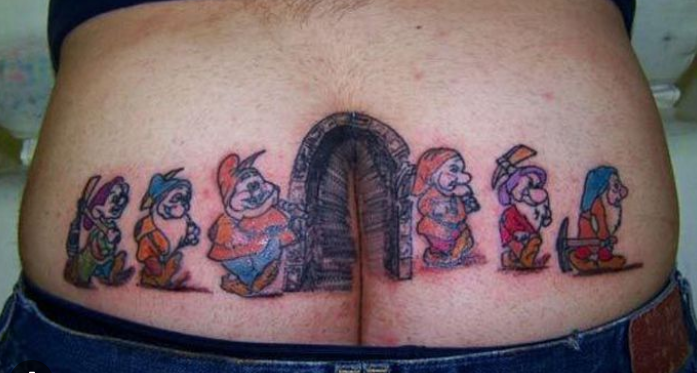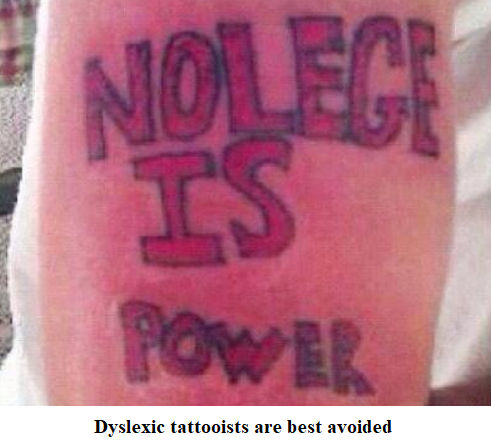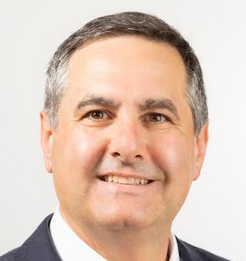
Call me Isaac. Not for me the restless wanderings of an Ishmael, whether in the desert or on the sea (which is much the same thing). You won’t find me signing up to sail on a pegleg sea captain’s monomaniacal search for a white-headed whale, “with three holes punctured in his starboard fluke”—or, for that matter, on a two-week luxury cruise around New Zealand, drinks included. It’s just not worth it, what with all the cannibals about. The most celebrated literary cannibal of them all, Queequeg of Herman Melville’s Moby Dick, didn’t hesitate to leave his own comfortable South Seas island in search of adventure in distant lands, but then the homoerotic lead harpooner (harpoonist? Melville has it as “harpooneer”) of the Pequod feared neither the behemoths of the deserts nor the leviathans of the seas. Ishmael opined in Moby Dick that Queequeg looked like a man who “never had had a creditor”, like “George Washington, cannibalistically developed”. If that’s the sort of person who goes to sea, I’ll stay on land.
Queequeg is said to have been “on the whole a clean, comely-looking cannibal”—covered in tattoos from crown to soul. His arm (Melville doesn’t say which one) was “full of odd little parti-coloured squares and triangles … tattooed all over with an interminable Cretan labyrinth of a figure”. His other tattoos are described only as “unearthly”. Civilised men did not, in Melville’s time, sport tattoos, though Ishmael did at one point remark that he would rather “sleep with a sober cannibal than a drunken Christian”. In all 500-plus pages of Moby Dick, the only tattooed characters are the “many tattooed savages sailing in Nantucket ships” and one “white man—a whaleman too—who, falling among the cannibals, had been tattooed by them”. Even half a century later, Arthur Conan Doyle inserted only three tattooed characters into the complete canonical adventures of Sherlock Holmes: a sergeant of Marines with a blue anchor on the back of his hand, a red-headed pawnbroker who had been tattooed while travelling in China, and a felon sentenced to transportation to New South Wales.
These three, in nearly 1000 pages of detective stories! And Holmes had even written a monograph on the subject. Tattooing statistics for the nineteenth and early twentieth centuries are sorely lacking, but if these examples are anything to go by, landside tattoos must have been very rare indeed. Histories of tattooing claim that the first modern tattoo parlours were opened in New York in the 1870s and London in the 1880s, but it seems they mainly catered to military men, circus women, and the British nobility. The normalisation of tattoos didn’t come until the world wars (war has always been good for business), when mass enlistment made tattoos relatively commonplace among working-class soldiers and sailors. There they remained, until rebellious Baby Boomers tamed tattoos into middle-class fashion statements, the boys sporting forearm daggers and the girls offering peaks of butterflies on their backs. Maybe it was 1960s academic Marxism that made it de rigueur to be so déclassé. Or maybe it was Elvis.
As a point of fact, Elvis himself was not known to have any tattoos, but the “devilish tantalisation of the gods” (as Captain Ahab called it) by comfortably middle-class post-war Anglo-American youth certainly owes something to the Elvis phenomenon of the working-class man as middle-class idol. Competitive self-devaluation really is something new under the sun, the Book of Ecclesiastes notwithstanding, but it doesn’t seem to be wholly a Marxist phenomenon. Was it Karl Marx or rock-and-roll that turned the world’s youth onto greased hair, leather jackets and blue suede shoes? Was it Soviet propaganda or The Wild One that made biker gangs cool? (Sorry, Australians, but “bikie” gangs will never sound cool.) Was it the oppression of the working class that led Jerry Lee Lewis to erupt in great balls of fire? Did Frankie Valli read Friedrich Engels in graduate school?
In the 1961 hit single “The Wanderer”, the American doo-wop star turned rock-and-roller DiMucci brags that he has Flo on his left, Mary on his right, and Janie is the girl that he’ll be with tonight. Should Janie unwisely ask which one he loves the best, he vows to “tear open my shirt I got Rosie on my chest”. This is evidence, if evidence is needed, that by the time the Baby Boomers hit their teenage years, tattoos were cool. Blue-collar beats had buried the big band, and the new bad boys on the block brandished body art on their burly breasts. Granted, the movie directors and record producers who promoted the new teen culture were all communists, but the money men are always communists. Dion himself claims to have been a lifelong Republican.
Moreover, the Philistine is reliably informed that the Rosie inked on the Wanderer’s chest was not, in fact, Rosa Luxembourg. In an interview with Germany’s Der Spiegel magazine, Dion explained:
The “Wanderer” really existed. The guy’s name was Jackie Burns, he was a seaman and was fully tattooed, which was a rarity at the time. When he strolled through the area, he mostly wore undershirts, so you could see his tattoos, the names of his lovers, “Flo”, “Marie”, and “Rosie” on the chest. That’s exactly how I wrote it. I secretly admired the guy, he was really worth a song. Maybe I would have liked to have been this cool too.
So there you have it: from South Seas cannibals, through the merchant marine, to impressionable middle-class teens, most of them female. Yes, female. The Australian market research firm McCrindle reports that women now wear tattoos at twice the rate of men, and in the United States, the most popular tattoo search by far is for butterflies. Janis Joplin started the trend in 1970 by having an elaborate bracelet tattooed on her left wrist—and a cute little heart on her chest. She was dead within a year, aged twenty-seven. Not an auspicious beginning, perhaps, but tragedy is the crucible of legends.
 McCrindle reports that “our latest study [sic] shows one in four Australians has a tattoo”, but this implies that up to half of Australians of tattooing age may have tattoos, half of them too old to show them and the other half too young to know any better. For as Keats surely meant to write, “youth is beauty, beauty youth”, and that’s all you need to know. The tramp stamp (Merriam-Webster dictionary: “informal and sometimes disparaging—a tattoo located on a woman’s lower back”) will always look suggestive on a twenty-something yoga instructor; the shoulder skull will always look fearsome on a twenty-something muscle-head. At forty or fifty, not so much. Tattoos were better suited to a time when the average life expectancy was thirty-eight. People don’t age well, but tattoos age even worse.
McCrindle reports that “our latest study [sic] shows one in four Australians has a tattoo”, but this implies that up to half of Australians of tattooing age may have tattoos, half of them too old to show them and the other half too young to know any better. For as Keats surely meant to write, “youth is beauty, beauty youth”, and that’s all you need to know. The tramp stamp (Merriam-Webster dictionary: “informal and sometimes disparaging—a tattoo located on a woman’s lower back”) will always look suggestive on a twenty-something yoga instructor; the shoulder skull will always look fearsome on a twenty-something muscle-head. At forty or fifty, not so much. Tattoos were better suited to a time when the average life expectancy was thirty-eight. People don’t age well, but tattoos age even worse.
The astringent Quadrant columnist Anthony Daniels, who characterises tattoos as “the graffiti of the skin”, claims to have “tried in vain to find a publication … that dares to suggest that this self-adornment or mutilation is anything other than a serious art form”. Rest easy, sweet prince. Tattoos may be the most mobile of art forms, but they are hardly the most serious. Tattoos are tasteless, frivolous, self-indulgent and generally ugly, and rapidly depreciate over time. Good-looking people can carry off a tattoo, but a tattoo never makes anyone look better. A tattoo is at best a conversation-starter: Is that your only tattoo? How old were you when you got it? Are those your ex’s initials? It is at worst a deal-breaker: Do you have any other tattoos I should know about? That’s the same tattoo my mother has! Those are your ex’s initials.
In 2021, an attractive young Sydney influencer hit the clickbait news all over the world with her Ted Bundy and Jeffrey Dahmer tattoos (right leg, mid-thigh to upper ankle, Bundy on top), inked complete with representative quotations from the respective bards. Today she is an edtech entrepreneur, and she wears a concealing white turtleneck on her LinkedIn profile. Quadrant wishes her well, and recommends that she change her name and start a new life in Argentina. Unlike other art, once you buy a tattoo, you can never sell it. The best you can do is cover it, grow hair over it, or smudge it out. The complete lack of saleability may be what most distinguishes tattoos from real art: as Banksy has shown, even graffiti has a secondary market. Tattoos were only ever saleable among cannibals, and even then the proceeds didn’t accrue to the original owner. These days, no one wants your old tattoo. Likely not even you.
 Sign In
Sign In 0 Items (
0 Items ( Search
Search










Tattoos are the signature of the ‘Look at Me” generation. Can there be any other reason someone would desecrate a part of their own body that they cannot even see? After the Nazis’ efforts with the ink needle, I am surprised anyone would want to mark themselves. (and pay the ‘artist’ for the privilege!).
I am far too old to be of the ‘Look at Me” generation, but I have one tattoo, on my outer left forearm, in plain sight for most of the time.
It is plain, unadorned text:
DEATH
BEFORE
DISHONOR (American spelling because it fitted better)
It’s for my benefit only – a constant reminder of what is important to me.
Been tested just once, seeming chose death but happily lived.
We’ve always thought of tattoos as one of those “uniform of the non-conformist” statements. ’nuff said…
I got plenty of tattoos as a kid thanks to Scanlens Tattoo Gum. The tattoo usually lasted longer than the gum and would wash or sweat off. The most sensible benefit of the gum was we had our fun, grew out of the need of tattoos and were’nt marked for life. The reality statement conferred by permanent tattoos is: Property Of Boofhead The Narcissist.
If someone asks why I, a mature person both physically and mentally, had a tattoo, my typical answer is “Because I chose to” if it’s someone I like, or “MYOB” if I’m indifferent, or “MYOFB” if I dislike.
I received unto myself a tattoo once. It hurt a great deal, and bled a lot. Frankly I’m surprised the youth of today are up for it.
I was aged 17 at the time, and the chief aim during that brief but hectic period of life seemed to be accomplishing as many +18 legal feats as possible, before that stern occasion arrived. By way of another example, a certain publican was a little irate when I celebrated my 18th birthday on his licenced premises. We’d been on drinking terms for some time prior.
Not many young people had tattoos then so I was considered cool by other 17 year olds which, if I recall correctly, was very important at the time.
These days my son finds the tattoo amusing, and my wife is disparaging, so I guess that’s another two wins.
Quote: “People don’t age well, but tattoos age even worse”.
.
Tattoos can be refreshed and return to almost as new appearance – cheap “plastic surgery”.
Is the use of Tatt appropriate in deference to Tattoo? If so and when- yours sincerely, cheap humour.
I’ve never seen that use although “tat” is common. Thus to me (and of course others) “tats” means multiple tattoos while “tatts” is more commonly used as an abbreviation of “TattsLotto”.
Your being very cheeky.
You’re
Heheheheh – show us yer tatts!
When I was young a grandmother would show you the lacework which she tatted
Thanks Salavtore, for a laugh. It never ceases to amaze me how many otherwise attractive young women permanently cover their bodies with ‘artwork’ which, I suspect, they would never hang on their living room wall.
A close friend, similar background to you, was very turned on by tattooed ladies whom he considered were made more attractive by virtue of their tattoos. In my experience he’s far from an orphan in or out of the military.
You wanna be reeely cool. Get a hot iron brand.
Yairs, offered a favourite granddaughter a choice of “N Crankhandle 7” and “S Diamond S” on either buttock or “M S Diamond” on her nearside shoulder, two of our old horse brands and the latter a cattle brand, informed her that they were copyright and couldn’t be copied. She declined and remains a cleanskin, as far as I know that is!
When I was a young hospital doctor (in the sixties) anyone with a tattoo automatically got a Wassermann Test.
>”Tattoos were only ever saleable among cannibals, and even then the proceeds didn’t accrue to the original owner.” [quote from the opening post]
Wonderful, Salvatore B ))
What utterly eludes me is that people actually think tattoos look good, when in fact NO tattoos look good. Not when they are first put on, not when they inevitably turn into an ugly blue smear. They just look stupid. And ugly. And surely the only people who want them are mentally defective.
“…in fact NO tattoos look good”. Without qualification, such as “to me”, that is wrong. “Beauty is in the eye of the beholder” is as true now as it was when Shakespeare wrote: “Beauty is bought by judgement of the eye”.
.
“…they **inevitably** turn into an ugly blue smear” is rationally indisputably wrong – they can in most cases be renovated, in many cases to almost indistinguishable from new. How my black, unadorned “DEATH BEFORE DISHONOR” could turn into a smear, let alone blue, is beyond my imagination.
“And surely the only people who want them are **mentally defective**”
.
A female FCA judge, having seen me being cross-examined for 2 days by a hapless lawyer, and conducting the case as a litigant in person including cross-examining the applicant, wrote in her reasons “Mr Loveday is intelligent and articulate…”.
.
Are you there Norsaint? How often do you reckon that happens?
Ha ha. Len, well done you.
I have noticed though these tyrants often indulge in a little patronizing before coming down heavily agin one.
I’m with you TT , loathed them as a kid , still do at 63 , and question the sanity of those that have them . They are visual pollution to me , as are graffiti , facial piercings and modern architecture . Narcissistic, solipsistic, self-indulgent and a perfect sign as to how society has collapsed .
To me, styled hair on men is “visual pollution” more so than tattoos. My hair has been cut by Wahl clippers with a number 2 comb for 50+ years – mostly by me, sometimes by an unpaid other.
My dear husband reckoned that a wise investment might be in laser or other removal methods for what he predicted would be a tsunami of tattoo-regret.
Time will tell.
Much of my working life has been at sea on boats or offshore rigs.
Saw plenty of tats, but up until late 1980s, only on seamen (Navy or merchant) or ex-cons.
The prison tats were mostly notable by their wobbly handwriting, and more likely to be on hands, neck or face.
Never appealed to me. Most the modern ones are crappy too, but at least they seem to have better inks and artwork, so will probably look better for longer.
I always remember the story of the tough looking “bikey” observed on a country train with tattooed knuckles.
Fate had dealt him the doubly cruel blow of the loss of a small finger in an accident.
He was condemned to go through life with the enigmatic words “LOVE’ and “HAT” to bewilder his observers.
Martha Stewart & Apo Whang-Od, a 106-year-old tribal tattooist in the Philippines. The wisdom she carries in every forehead wrinkle and frown line is stunning. Her eyes are glass, reflecting back all that she’s witnessed over a century of lived experiences. Her tattoos a reminder of the ancestors she seeks to honor.
twitter.com/mhdksafa/status/1660488368411619329